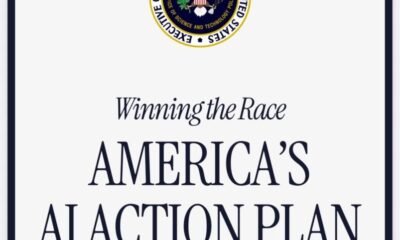Education
London Met withdraws from Bangladesh as new BCA thresholds loom

The decision comes ahead of anticipated changes to the Basic Compliance Assessment (BCA) thresholds that UK institutions must meet – or else risk having their sponsor license revoked. Under proposals outlined in Keir Starmer’s immigration white paper, each BCA metric would be tightened by five percentage points, lowering the visa refusal rate threshold for remaining within the ‘green’ compliance category to just 5%.
Gary Davies, deputy vice-chancellor at London Metropolitan University, confirmed to The PIE News that the university has had to take the “very regrettable decision” to withdraw from Bangladesh following an uptick in visa refusals for students from the South Asian country. The move comes as part of the institution’s steps to make sure it is comfortably within the proposed 5% BCA visa refusal threshold.
“So far, we’ve seen more refusals than we’re comfortable with. And 60-65% of them come from Bangladesh,” he explained. “This matches UKVI briefings indicating that they see Bangladesh as a high risk region.”
The decision has involved withdrawing CASs that have already been issued so that “no student will lose any money as a result”, Davies added.
“It wasn’t an easy decision, but we are doing this as a responsible sponsor in line with our obligations to the UK government and our commitment to applicant welfare. We’re very aware that once you get refused for a visa it makes it harder for students to get a visa – student, tourist or other type – in the future,” he told The PIE.
“Protecting student welfare is our first priority, including supporting long-term visa prospects and minimising unnecessary risk. As a student sponsor, we continue to meet the Home Office’s required standards and have robust systems in place to monitor our compliance.”
Davies said the decision was “very regrettable”, but that he and his colleagues at London Metropolitan University “genuinely felt there was no responsible alternative”.
The biggest impact of the white paper on immigration was always going to be on changing behaviours of institutions rather than students
Gary Davies, London Metropolitan University
And he stressed that the move had not been prompted by any formal discussions the university has had with UKVI, with London Met’s BCA metrics remaining “strong” and two of the three “comfortably within the new expected thresholds”.
“We believe this is a responsible and proportionate step given the current context,” said Davies. “The biggest impact of the white paper on immigration was always going to be on changing behaviours of institutions rather than students.”
The decision from London Metropolitan University forms part of a wider trend in the UK as institutions scramble to stay ahead of the expected squeeze on compliance rules.
Earlier this month, The PIE revealed that Glasgow Caledonian University had halted international student recruitment to courses at risk of being non-compliant under the anticipated new BCA thresholds.
The PIE has also had confirmation from the University of Sunderland that it has taken the decision to pause recruitment from Sudan, Iran, Iraq, Syria, and Yemen.
A spokesperson for the university said that the institution is “committed to continuously strengthening our recruitment practices and take our responsibilities under the UKVI licence seriously”, adding that while it regularly reviews its practices in light of changing situations, the proposals outlined in the immigration white paper “have introduced an additional layer to our considerations”.
“Decisions to suspend recruitment in regions identified as ‘high risk’ are not uncommon and have been taken at various points throughout the duration of our UKVI licence,” they said. “We will continue to sponsor all students who have already been issued a CAS and are expected to commence their studies with us.”
Meanwhile, QA Higher Education (QAHE) has notified agents that it is pausing recruitment from Pakistan for all IFP and IY1 programs for January, March and September intakes for some of its partner universities next year.
“We are always monitoring data and regulatory advice with our university partners,” said Nick Miller, the company’s chief commercial officer. “Where we identify contextual data or regulatory advice that presents risk, we take proactive steps to protect QAHE and our university partners and sadly this can, at times, impact applicants and students as a result.”
Education
Why Coursera, Udemy, and Pluralsight Are Key Buys in 2025

The digital education sector is undergoing a seismic shift as AI-driven personalization redefines how learners acquire skills. In 2025, Coursera, Udemy, and Pluralsight stand out as pioneers, leveraging cutting-edge artificial intelligence to tailor learning experiences, dominate enterprise training, and capitalize on a $360 billion global corporate training market [4]. Their strategic market positioning, technological innovation, and financial resilience make them compelling investments for forward-looking portfolios.
Coursera: Scaling AI-Powered Learning Through Academic and Corporate Partnerships
Coursera’s integration of multimodal AI—enabling learners to interact with images, audio, and video—has transformed passive content consumption into dynamic, adaptive experiences [1]. By partnering with top universities and enterprises, the platform offers professional certificates and degree programs that align with industry needs. For example, its AI-driven personalization engine analyzes user behavior to recommend courses in high-demand fields like data science and IT, ensuring learners stay ahead of skill gaps [1].
Financially, Coursera’s Q2 2025 results underscore its growth trajectory: revenue hit $187 million, a 10% year-over-year increase, with a revised full-year outlook of $738–$746 million [2]. The platform’s Degree programs grew by 13% YoY, reflecting strong demand for structured, AI-enhanced learning pathways [3]. Analysts project that Coursera’s focus on enterprise partnerships—such as its collaboration with IBM to train 100,000 employees in AI and cloud computing—will further solidify its market leadership [1].
Udemy: Monetizing AI-Driven Flexibility and Enterprise Adoption
Udemy’s Q2 2025 earnings reveal a strategic pivot to AI-powered personalization. The platform reported $199.9 million in revenue, with its Enterprise segment (Udemy Business) contributing $129.3 million—a 7% YoY increase [1]. For the first time since its IPO, Udemy achieved GAAP profitability in Q2 2025, driven by a 6% rise in Annual Recurring Revenue (ARR) for Udemy Business and a 95% Net Dollar Retention Rate [1].
Udemy’s AI innovations, such as AI-assisted role-play and automated assessments, are reshaping how learners engage with content. By integrating Google’s Agent2Agent Protocol and Anthropic’s Model Context Protocol, Udemy enables seamless AI collaboration, allowing instructors to design adaptive learning programs at scale [6]. The platform’s “AI Readiness” and “AI Growth” collections have become staples for enterprises seeking to upskill employees in AI literacy and application [2]. With 200,000+ paid consumer subscribers and a target of 250,000 by year-end, Udemy’s dual focus on individual and corporate markets positions it as a versatile player [2].
Pluralsight: Dominating Tech Education with AI-Centric Training
Pluralsight’s 2025 Tech Forecast highlights AI as the most in-demand skill among tech professionals, with a 167% surge in interest for tools like LangChain—a framework for building AI applications [5]. The platform’s emphasis on hands-on labs and real-world scenarios ensures learners master practical skills, such as deploying small language models (SLMs) for edge AI projects [5].
Pluralsight’s enterprise solutions are particularly compelling. By offering tailored training for cloud computing, cybersecurity, and data science, the platform addresses the urgent need for data specialists in AI projects [5]. Its 2025 forecast also notes a 30% improvement in knowledge retention through AI-driven personalization, a metric that resonates with corporate clients prioritizing ROI [2]. While specific 2025 financials are not disclosed, Pluralsight’s strong market presence in the $360 billion corporate training sector and its focus on AI-native content suggest robust growth potential [4].
Market Trends and Analyst Projections
The broader digital education market is accelerating. By 2025, 93% of businesses plan to adopt eLearning, driven by hybrid work models and AI’s ability to personalize training [2]. Analysts project that AI-powered platforms will outperform traditional models by 30% in skill acquisition efficiency [2]. For investors, this creates a clear opportunity: platforms that combine technological innovation with enterprise adoption—like Coursera, Udemy, and Pluralsight—are best positioned to capture market share.
Conclusion: A Triad of Innovation and Growth
Coursera, Udemy, and Pluralsight exemplify how AI-driven personalization is reshaping digital education. Their ability to adapt to evolving learner needs, secure enterprise contracts, and integrate AI into core offerings ensures sustainable growth. With the corporate training market expanding rapidly and AI literacy becoming a universal requirement, these platforms are not just surviving—they’re leading the charge. For investors, the case is clear: these three companies represent a trifecta of innovation, scalability, and market relevance in 2025.
Source:
[1] Digital Education – Company Evaluation Report, 2025 [https://www.globenewswire.com/news-release/2025/09/01/3142050/28124/en/Digital-Education-Company-Evaluation-Report-2025-Coursera-Udemy-and-Pluralsight-Lead-with-AI-Powered-Personalization-Diverse-Course-Portfolios-and-Enterprise-Focused-Tech-Training.html]
[2] Udemy Reports Second Quarter 2025 Results [https://www.businesswire.com/news/home/20250729032090/en/Udemy-Reports-Second-Quarter-2025-Results]
[3] Coursera vs Udemy Statistics By Market Share And Facts [https://electroiq.com/stats/coursera-vs-udemy-statistics/]
[4] Corporate Training Market Outlook Report 2025-2030 [https://finance.yahoo.com/news/corporate-training-market-outlook-report-080500710.html]
[5] Pluralsight 2025 Tech Forecast Reveals Path Forward for IT Professionals Amid Concerns About AI [https://www.prnewswire.com/news-releases/pluralsight-2025-tech-forecast-reveals-path-forward-for-it-professionals-amid-concerns-about-ai-302354948.html]
[6] How Udemy Will Lead the AI Skills Revolution: Q1 2025 [https://www.linkedin.com/pulse/how-udemy-lead-ai-skills-revolution-q1-2025-results-beyond-sarrazin-jaf4e]
Education
College president fears that federal education cuts will derail the promise of student parents, student military veterans and first-gen students

As a college president, I see the promise of higher education fulfilled every day. Many students at my institution, Whittier College, are the first in their families to attend a university. Some are parents or military veterans who have already served in the workforce and are returning to school to gain new skills, widen their perspectives and improve their job prospects.
These students are the future of our communities. We will rely on them to fill critical roles in health care, education, science, entrepreneurship and public service. They are also the students who stand to lose the most under the proposed fiscal year 2026 federal budget, and those who were already bracing for impact from the “One Big Beautiful Bill” cuts, including to the health care coverage many of them count on.
The drive with which these extraordinary students — both traditionally college-aged and older — pursue their degrees, often while juggling caregiving commitments or other responsibilities, never fails to inspire me.
Related: Interested in innovations in higher education? Subscribe to our free biweekly higher education newsletter.
We do not yet know the precise contours of the spending provisions Congress will consider once funding from a continuing resolution expires at the end of September. Yet we expect they will take their cues from the president’s proposed budget, which slashes support for students and parents and especially hammers those already struggling to improve their lives by earning a college degree, with cuts to education, health and housing that could take effect as early as October 1.
That budget would mean lowering the maximum Pell Grant award from $7,395 to $5,710, reversing a decade of progress. For the nearly half of Whittier students who received Pell Grants last year, this rollback would profoundly jeopardize their chances of finishing school.
So would the proposal to severely restrict Federal Work-Study, which supports a third of Whittier students according to our most recent internal analysis, and to eliminate the Supplemental Educational Opportunity Grant, which more than 16 percent of our student body relies upon. In addition, this budget would impose a cap on Direct PLUS Loans for Parents, which would impact roughly 60 percent of our parent borrowers. It would also do away with the Direct PLUS Loans for Graduates program.
These programs are lifelines, not just for our students but for students all across the country. They fuel social mobility and prosperity by making education a force for advancement through personal work ethic rather than a way to rack up debt.
If enacted, these proposed cuts would gut the support system that has enabled millions of low-income students to earn a college degree.
Higher education is a bridge. To cross it and achieve their full potential, students from all walks of life must have access to the support and resources colleges provide, whether through partnerships with local high schools or with professional gateway programs in engineering, accounting, business, nursing, physical therapy and more. Yet, to access these invaluable programs, they must be enrolled. How will they reach such heights if they suddenly can’t afford to advance their studies?
The harm I’ve described doesn’t stop with cuts to financial aid, loans and services. Proposed reductions also target research funding for NASA, NIH and the National Science Foundation. One frozen NASA grant has already led to the loss of paid student research fellowships at Whittier, a setback not just in dollars but in momentum for students building real-world skills, networks and résumés.
These research opportunities often enable talented first-generation students to connect their classroom learning to career pathways, opening the door to graduate school, lab technician roles and futures in STEM fields. We’ve seen how federal funding has supported student projects in everything from climate data analysis to environmental health.
Stripping away support for hands-on research undermines the federal government’s own calls for colleges like ours to better prepare students for the workforce by dismantling the very mechanisms that make such preparation possible.
It’s particularly disheartening that these changes will disproportionately hurt those students who are working the hardest to achieve their objectives, who have done everything right and have the most to lose from this lack of investment in the future.
The preservation and strengthening of Pell, Work-Study, Supplemental Educational Opportunity grants and federal loan programs is not a partisan issue. It is a moral and economic imperative for a nation that has long been proud to be a land of opportunity.
Let’s build a system for strivers that opens doors instead of slamming them shut.
Let’s recommit to higher education as a public good. Today’s students are willing to work hard to deserve our continuing belief in them.
Kristine E. Dillon is the president of Whittier College in California.
Contact the opinion editor at opinion@hechingerreport.org.
This story about education cuts was produced by The Hechinger Report, a nonprofit, independent news organization focused on inequality and innovation in education. Sign up for Hechinger’s weekly newsletter.
Education
Pupils in England from low-income families ‘bounced out’ of costlier GCSEs | Secondary schools

Secondary school pupils from low-income families are “bounced out” of studying subjects such as geography and languages because of fears about extra costs, according to a survey of children in England.
Nearly a quarter (23%) of those surveyed who were in receipt of free school meals (FSM) said the cost – or worries about the cost – prevented them from choosing certain GCSE subjects, compared with just 9% of non-FSM pupils.
Costs associated with geography field trips and modern foreign language visits make it difficult for the most disadvantaged students to pursue these subjects.
Other subjects with additional costs include music, because of instrument lessons, food and nutrition, which requires ingredients, and PE, due to the extra kit and equipment required.
Almost a third (30%) of FSM students said their families already struggle to afford the basics they need for homework, including access to technology and devices.
The survey of more than 1,000 students, which was conducted by Survation for the Child Poverty Action Group (CPAG), revealed stark differences between pupils on FSM and their non-FSM peers.
Secondary pupils on FSM are nearly twice as likely as their better-off peers to say their family’s income makes it harder for them to learn at school (15% v 8%). They are also more likely to say it is difficult to afford pens and pencils (14% v 8%).
Of those children in receipt of FSM, a third (34%) said it is difficult to afford school trips and a fifth (21%) struggle to pay for clubs, while more than a quarter (27%) said it is difficult to afford musical instruments or instrument tuition
CPAG’s head of education policy, Kate Anstey, said: “Children in struggling families are going back to school only to be bounced out of some subjects and learning by costs – cut off from opportunities just as the foundations of their futures are being laid.
“The prime minister has promised to leave ‘no stone unturned to give every child the very best start at life’ but actions are needed to match that objective. Government’s forthcoming child poverty strategy must invest in family incomes and children’s life chances – and scrapping the two-child limit must be the first action point.”
It costs parents of secondary schoolchildren a minimum of £2,275 a year to send a child to school, according to earlier CPAG research, of which £450 goes on learning materials including stationery, revision guides and calculators.
Labour’s flagship child poverty strategy was originally due to be published in the spring, but was delayed amid continuing debate about the cost implications of ending the two-child benefit cap.
The cap, which limits parents to claiming many means-tested benefits for their first two children, apart from in very limited circumstances, was introduced under the Conservatives. Experts say scrapping it would be the single most effective way of reducing child poverty.
A Department for Education spokesperson said: “We are absolutely clear that schools should make sure the cost of curriculum subjects is not a barrier to access and that materials necessary for examinations are provided to all pupils.
“More widely, we are putting pounds back in parents’ pockets by limiting the number of branded uniform items, expanding free school meals to every family on universal credit and rolling out free breakfast clubs across the country.”
-
Tools & Platforms3 weeks ago
Building Trust in Military AI Starts with Opening the Black Box – War on the Rocks
-

 Business3 days ago
Business3 days agoThe Guardian view on Trump and the Fed: independence is no substitute for accountability | Editorial
-

 Ethics & Policy1 month ago
Ethics & Policy1 month agoSDAIA Supports Saudi Arabia’s Leadership in Shaping Global AI Ethics, Policy, and Research – وكالة الأنباء السعودية
-

 Events & Conferences3 months ago
Events & Conferences3 months agoJourney to 1000 models: Scaling Instagram’s recommendation system
-

 Jobs & Careers2 months ago
Jobs & Careers2 months agoMumbai-based Perplexity Alternative Has 60k+ Users Without Funding
-

 Funding & Business2 months ago
Funding & Business2 months agoKayak and Expedia race to build AI travel agents that turn social posts into itineraries
-

 Education2 months ago
Education2 months agoVEX Robotics launches AI-powered classroom robotics system
-

 Podcasts & Talks2 months ago
Podcasts & Talks2 months agoHappy 4th of July! 🎆 Made with Veo 3 in Gemini
-

 Podcasts & Talks2 months ago
Podcasts & Talks2 months agoOpenAI 🤝 @teamganassi
-

 Mergers & Acquisitions2 months ago
Mergers & Acquisitions2 months agoDonald Trump suggests US government review subsidies to Elon Musk’s companies





















